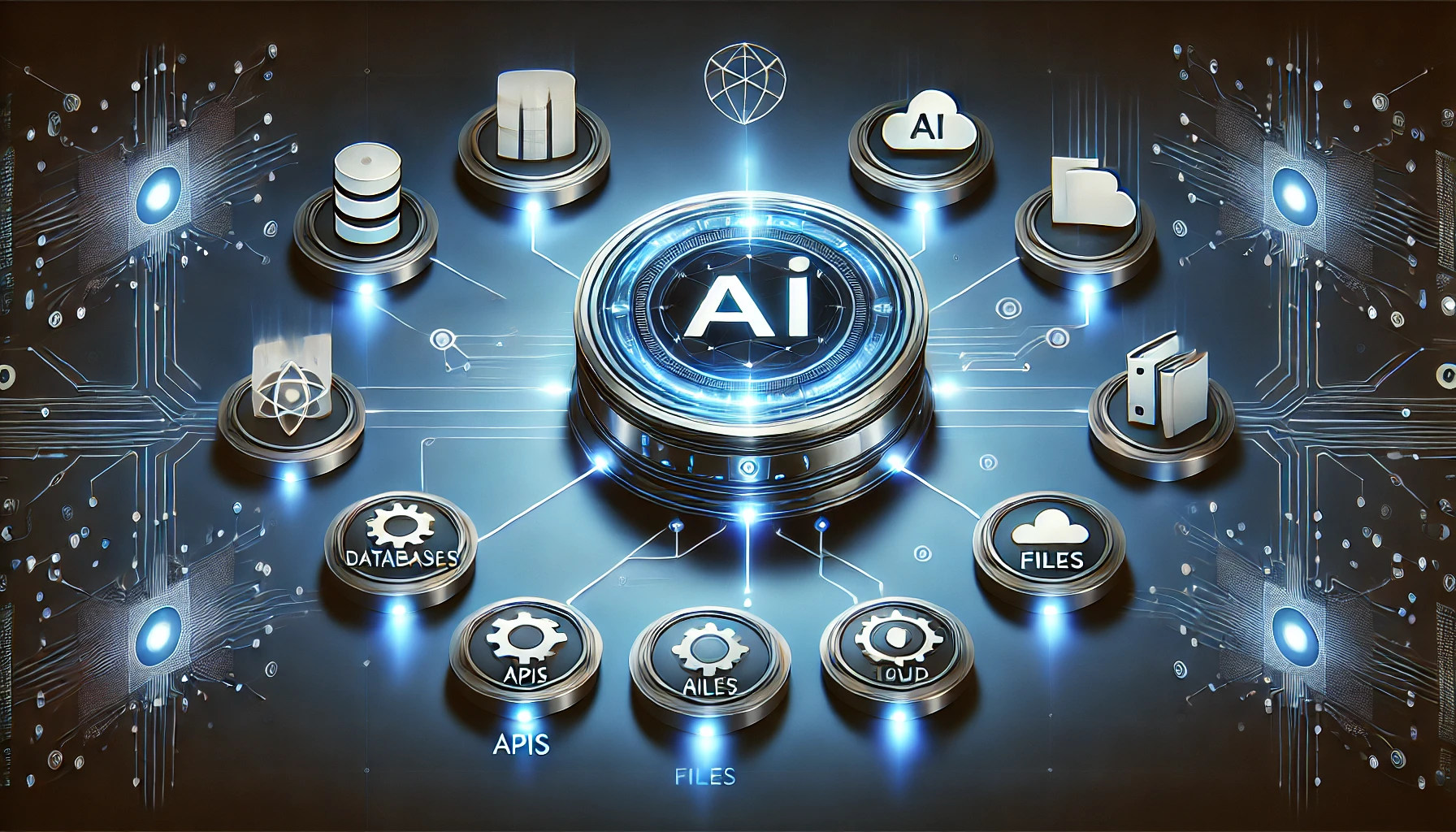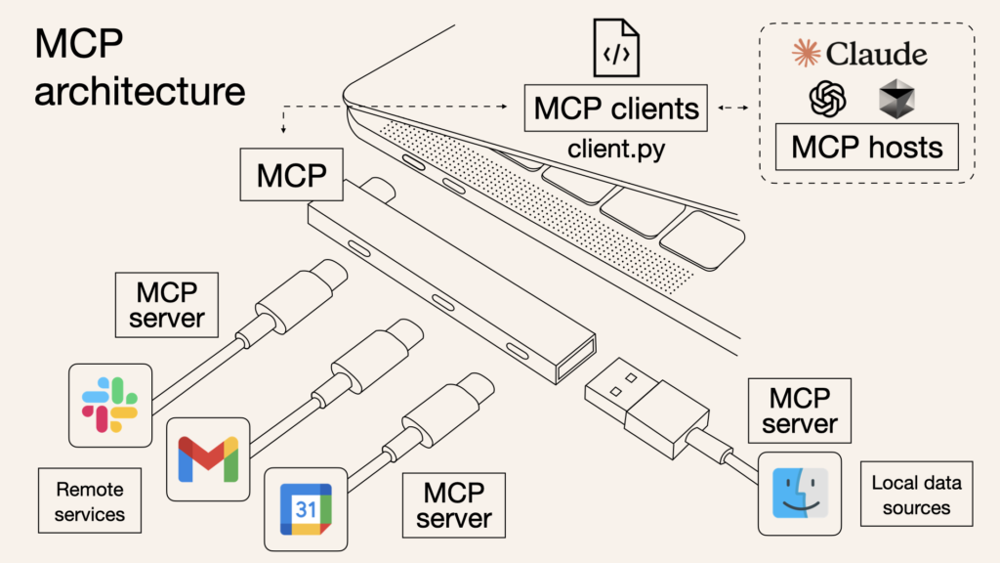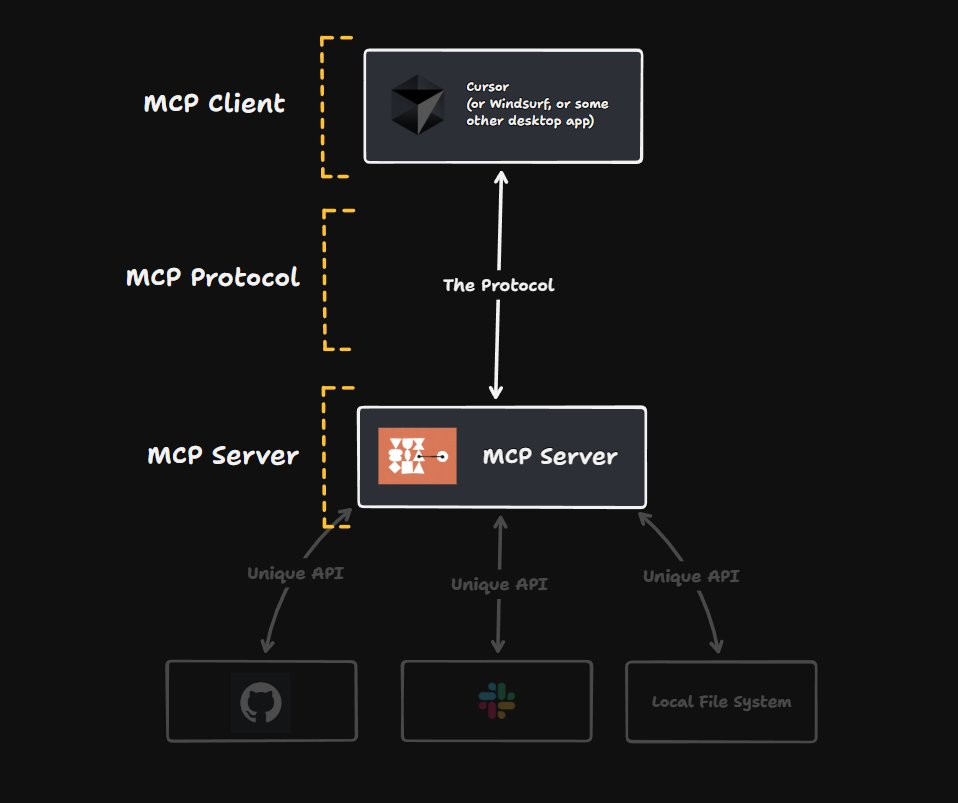Understanding the Model Context Protocol (MCP) by Anthropic
 Nagen K
Nagen K
Introduction
The Model Context Protocol (MCP) is an open-source standard introduced by Anthropic that allows AI models to interact with external tools and data in a consistent, secure, and extensible way. Anthropic explains MCP as : Think of it as the "USB-C for AI agents" — one unified interface to connect LLMs with files, databases, APIs, and more.
MCP bridges the gap between large language models and the real-world systems they need to access — such as file systems, REST APIs, cloud tools, or custom business logic — by establishing a universal protocol that handles discovery, interaction, and contextual grounding. Instead of hardcoding prompts or writing model-specific plugins, developers can use MCP to build reusable, composable interfaces that are model-agnostic and easy to extend.
At its core, MCP introduces a client-server model where the AI application (host) communicates with one or more MCP-compliant servers. Each server exposes "resources" (read-only data) and "tools" (executable functions), allowing the AI to retrieve relevant context or perform actions without knowing the backend specifics.

Why MCP Matters
Before MCP, integrating tools or data with AI models was fragmented and inconsistent. MCP solves this by:
Providing a standard protocol for accessing data (resources) and invoking actions (tools).
Supporting cross-application interoperability.
Enabling contextual memory across sessions.
Enforcing security and approval flows for sensitive actions.
Core Architecture
Components:
Host: AI-powered app (e.g., Claude, IDE, chatbot)
MCP Client: Embedded in host; communicates with servers.
MCP Server: Exposes resources/tools from external systems.

How It Works
Communication Protocol:
Based on JSON-RPC 2.0
Transports:
stdiofor local,HTTP+SSEfor remote
Initialization Flow:
initializeinitializedReady to exchange
resources/*,tools/*, etc.
MCP Endpoints and Capabilities
Initialization & Lifecycle
initialize: Initiates the handshake between client and server, sharing capabilities.initialized: Acknowledges successful initialization and readiness for interaction.shutdown: Instructs the server to gracefully terminate the session.
Resources (Read-Only Data)
resources/list: Lists available resources or resource templates.resources/read: Reads one or more specified resources by URI.resources/subscribe: Subscribes to changes on a specific resource.notifications/resources/updated: Notification that a subscribed resource has changed.notifications/resources/list_changed: Notification that the list of resources has changed.
Tools (Executable Functions)
tools/list: Lists all available tools exposed by the server.tools/call: Executes a specific tool with the provided arguments.notifications/tools/list_changed: Notification that the list of tools has been updated.
Prompts (Prompt Templates)
prompts/list: Lists available prompt templates with optional arguments.prompts/get: Retrieves a specific prompt with its rendered message content.
Roots (Scope Management)
roots/set(via initialization or update): Specifies root URIs to scope resource/tool access for security or context restriction.
Sampling (Server → Model Calls)
sampling/createMessage: Allows the server to ask the client to run a model completion using specified messages (experimental feature).
Key MCP Capabilities
1. Resources (Read-Only Context)
{
"method": "resources/read",
"params": { "uri": "file:///README.md" }
}
Use for:
File contents
KB articles
Structured data (CSV, JSON)
2. Tools (Function Calls)
{
"method": "tools/call",
"params": { "name": "fetch_url", "arguments": { "url": "https://..." } }
}
Use for:
Fetching data
Updating records
Running computations
3. Prompts (Prompt Templates)
{
"method": "prompts/get",
"params": { "name": "generate-summary" }
}
Use for:
Standardized prompt workflows
Reusable prompt injections
4. Roots (Scope Control)
{
"method": "roots/set",
"params": { "uris": ["file:///project"] }
}
Use for:
- Scoping resources/tools to a directory or project
Practical Example: Summarize a Web Page
Goal: AI summarizes content from a live URL
Steps:
User asks: "Summarize https://example.com/blog/post"
AI triggers tool
fetch_urlvia MCPMCP server fetches content and returns text
AI summarizes based on the fetched content
// Request
{
"method": "tools/call",
"params": {
"name": "fetch_url",
"arguments": { "url": "https://example.com/blog/post" }
}
}
Real-World Walkthrough: Local MCP Agent Example
Objective
Build a local MCP server with one tool and one resource that Claude Desktop can interact with.
1. Install MCP Python SDK
Use pip:
pip install mcp
2. Write the Server
Create a file server.py with:
from mcp import FastMCP, Tool, Resource
app = FastMCP()
@app.tool
async def add(a: int, b: int) -> int:
return a + b
@app.resource
async def get_greeting(name: str) -> str:
return f"Hello, {name}!"
if __name__ == "__main__":
app.run()
3. Run the Server
Install and test your server:
mcp dev server.py
For Claude Desktop:
mcp install server.py
4. Configure Claude Desktop (macOS example)
Edit claude_desktop_config.json in ~/Library/Application Support/Claude/:
{
"mcpServers": {
"myserver": {
"command": "python",
"args": ["server.py"]
}
}
}
5. Try It in Claude
Ask: “What is 5 + 8?” → Should invoke the
addtoolAsk: “Greet Alice” → Should invoke the
get_greetingresource
Best Practices & Tips
✅ Use precise input schemas and enums for tools
✅ Separate tools (actions) from resources (read-only)
✅ Return large results as
resourceURIs to avoid token bloat✅ Gate sensitive tools with user approval
✅ Use
prompts/getto keep logic modular and reusable
Diagrams & Mindmaps
MCP Flow:
[User] --> [AI Host] --> [MCP Client] --> [MCP Server] --> [Backend/API]
Tool Usage Pattern:
[AI decides to use tool] → MCP Client → tools/call → Server → Result → Back to AI
Conclusion
MCP is a powerful framework for enabling dynamic, contextual, and safe interactions between LLMs and the real world. It simplifies the orchestration of multi-step AI workflows and unlocks powerful agentic capabilities.
References
Official site: https://modelcontext.org
GitHub spec: https://github.com/anthropics/model-context-protocol
Anthropic blog: https://www.anthropic.com/news/model-context-protocol
Subscribe to my newsletter
Read articles from Nagen K directly inside your inbox. Subscribe to the newsletter, and don't miss out.
Written by
